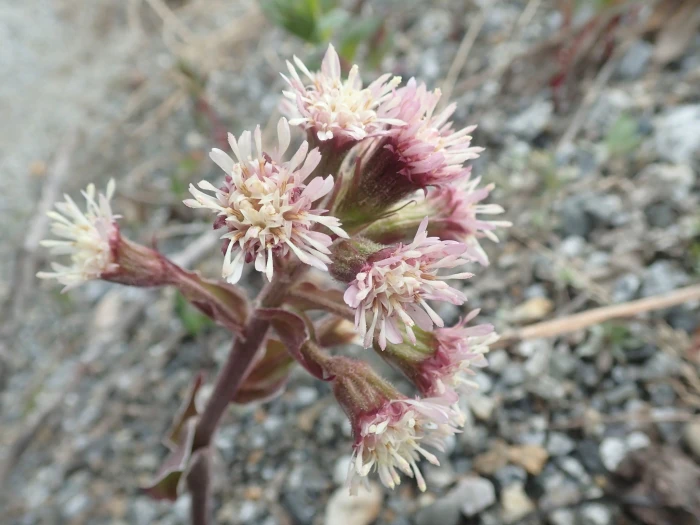Arctic Sweet Coltsfoot
(Petasites frigidus)
Arctic Sweet Coltsfoot (Petasites frigidus)
/
/

© F Quiec
CC BY-SA 4.0
Image By:
© F Quiec
Recorded By:
Copyright:
CC BY-SA 4.0
Copyright Notice:
Photo by: © F Quiec | License Type: CC BY-SA 4.0 | License URL: http://creativecommons.org/licenses/by-sa/4.0/ | Uploader: florianquiec | Publisher: iNaturalist |























Estimated Native Range
Climate Requirements for Brownsville, Texas
| This Plant | Your Site | Plant Suitability for Your Location | ||
|---|---|---|---|---|
| • Precipitation | 3" - 186" | 27" | Your precipitation may be insufficient for this plant. Irrigate N" / year. | Irrigate N" / year |
| • High Temp. | 33°F - 88°F | 93°F | Your summers may be too hot for this plant. | Too hot |
| • Low Temp. | -54°F - 43°F | 50°F | OK, but your winter temperatures are warmer than normal for this plant | OK |
This plant should grow well at your location with about N inches per year (Y minutes per month) of irrigation.
Summary
Petasites frigidus, commonly known as Arctic sweet coltsfoot, is an herbaceous perennial native to riparian zones, wet meadows, and moist, shaded ground in the Arctic and cool temperate regions of the Northern Hemisphere, including northern Europe, Asia, and North America. It typically forms colonies with upright flowering stems 4-8 inches tall, bearing clusters of yellowish-white to pink flowers in early spring before the leaves appear. The large, rounded, basal leaves rise directly from the rootstock after flowering and can create a dense ground cover.
Arctic sweet coltsfoot is valued for its early spring flowers and its ability to thrive in wet, shady conditions, making it suitable for rain gardens, streamside plantings, and naturalized areas. It is also used in traditional medicine, although caution is advised due to the presence of toxic pyrrolizidine alkaloids. In cultivation, it prefers consistently moist soil and can tolerate partial to full shade. While it is low-maintenance, gardeners should be aware that it can spread aggressively via rhizomes, potentially becoming invasive in favorable conditions.CC BY-SA 4.0
Arctic sweet coltsfoot is valued for its early spring flowers and its ability to thrive in wet, shady conditions, making it suitable for rain gardens, streamside plantings, and naturalized areas. It is also used in traditional medicine, although caution is advised due to the presence of toxic pyrrolizidine alkaloids. In cultivation, it prefers consistently moist soil and can tolerate partial to full shade. While it is low-maintenance, gardeners should be aware that it can spread aggressively via rhizomes, potentially becoming invasive in favorable conditions.CC BY-SA 4.0
Plant Description
- Plant Type: Herb
- Height: 0.7-1 feet
- Width: 2.25-3.25 feet
- Growth Rate: Moderate
- Flower Color: Pink, Purple, White
- Flowering Season: Spring
- Leaf Retention: Deciduous
Growth Requirements
- Sun: Part Shade, Full Shade
- Water: Medium, High
- Drainage: Medium, Slow
Common Uses
Erosion Control, Low Maintenance, Water Garden
Natural Habitat
Native to riparian zones, wet meadows, and moist, shaded ground in Arctic and cool temperate regions
Other Names
Common Names: Arctic Sweet Coltsfoot, Far North Coltsfoot, Nordische Pestwurz, Northern Sweet-Coltsfoot
Scientific Names: Petasites frigidus, Nardosmia angulosa, Nardosmia angulosa, Nardosmia corymbosa, Nardosmia frigida, Nardosmia frigida var. corymbosa, Nardosmia frigida var. frigida, Nardosmia frigidua var. corymbosa, Nardosmia nivalis
GBIF Accepted Name: Petasites frigidus